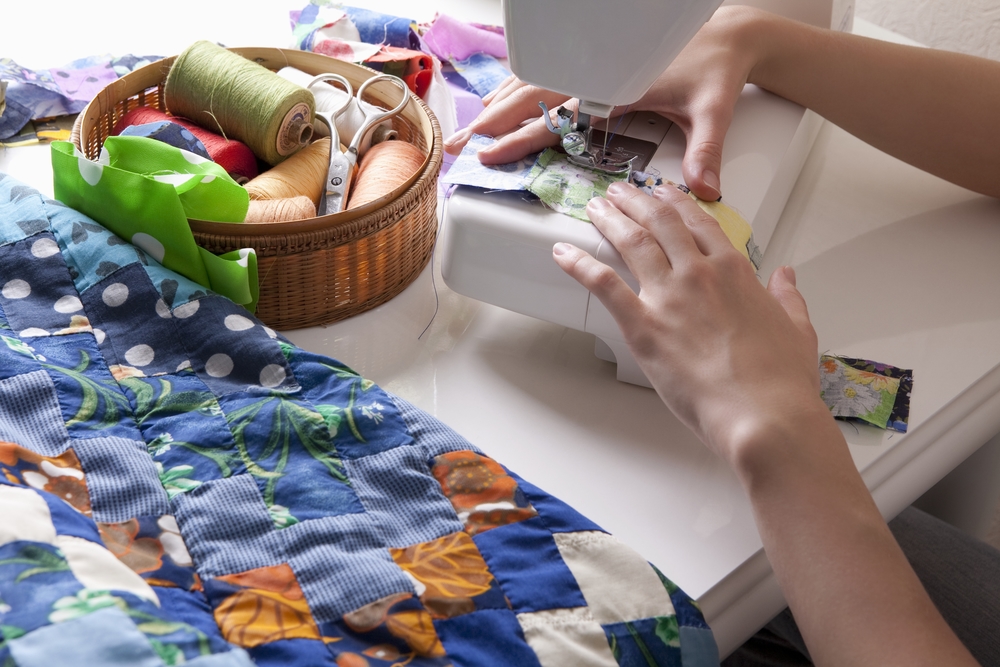Eyelet fabric refers to a pretty and versatile lace type of fabric with an incredibly long history. The beauty and toughness of this fabric make it popular in home décor and clothing, from wedding gowns to curtains.
Also, check out another one of our articles here: Sewing Garments With Quilting Cotton. Now, onto the topic on hand… sewing with eyelet fabric!
What Are Eyelet Fabrics?
Eyelet fabrics come in a wide range of textures, materials, and colors due to their long-standing popularity. The wide range of materials and colors makes eyelet designs a truly flexible way to create a unifying factor to your home décor or wardrobe.
Here are some tips to help you when using eyelet fabric in your sewing projects.
Cutting Eyelet Fabric
When cutting eyelet fabrics such as a cotton eyelet, you should trace your patterns onto Swedish tracing paper or tissue because the slight transparency of these papers will help you prevent ill-placed design patterns.
Depending on the design of your eyelet, the fabric’s selvage might have a beautiful lace border which you can incorporate into the design of your garment.
Pressing Eyelet Fabric
You should press eyelet fabrics on the wrong side if possible to avoid flattening the embroidery. Generally, the thread utilized to embroider most eyelet fabrics is synthetic, meaning you should test your fabrics before and utilize a press cloth, especially if the embroidery is synthetic.
Underlining the Eyelet Fabric
Lining works pretty well for eyelet materials. The peek-a-boo of these fabrics provide you with a good opportunity to include a little bit of contrast. If you prefer modesty, you can underline the eyelet in a material that compliments your skin tone. Lining fabric may seem tedious but will pay off.
Adding Seam Finishes
Since eyelet holes that enable you to see through the material, adding seam finishes can make a huge difference in the final appearance of your garment. Let’s talk about that and seam allowance.
Some of the ideal seam finishes include a straight-stitched seam with some serged seam allowances; a Hong-Kong finish utilizing organza strips or bias tape and a serged seam. All of these seam finishes will give you a clean and professional finish.
To Interface or Not To Interface
Due to the open-stitched makeup of eyelets, you should avoid using fusible interfacings on the fabrics. Instead, make use of silk organza in colors that are close to your eyelet, but they don’t have to match accurately.
Baste your preferred organza to the collars, facings, and any other part that needs it by utilizing a machine or longhand stitch within your seam allowances.
The Durability of Eyelet Fabric
You should take into account the durability of the eyelet fabric when sewing; eyelet fabric’s durability typically depends on the number and the size of holes in the material’s medium. A lot of big holes can make a light and airy fabric with a feeling of true lace, but you should use these fabrics with a lot of care, like out of high-traffic places in the home.
More durable materials with smaller and fewer holes can be utilized in busy places in the home and in casual clothing items that can be worn on a more regular basis.
Final Thoughts
Eyelet fabrics are always popular in home decor projects and fashion, offering a quick and easy way of incorporating visual interest, femininity, and texture to the most complex or simplest of sewing projects.
The tips mentioned above will help you know how to use eyelet in your entire projects or how to add a little bit of it in your garments for detail.

